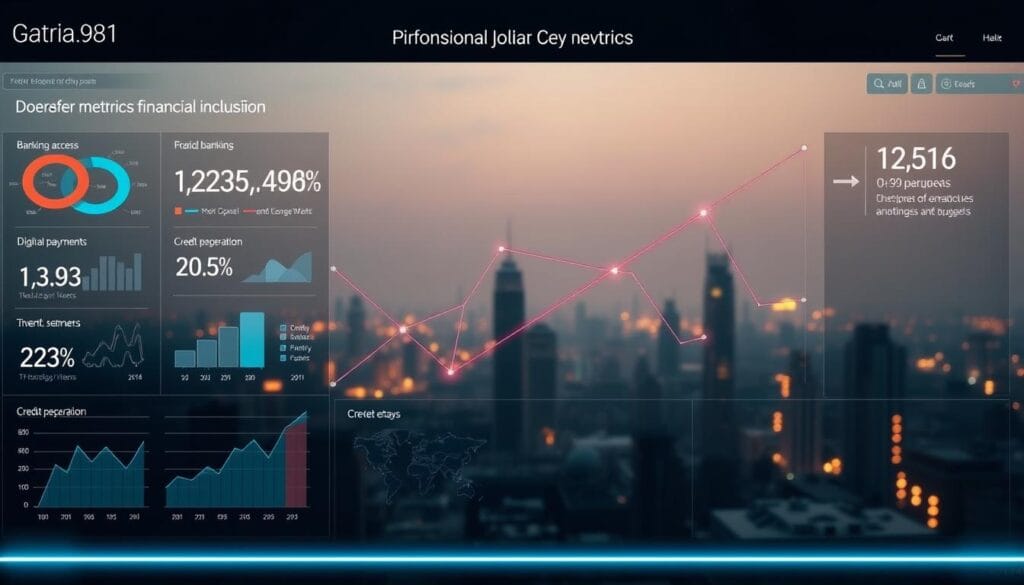Over 1.4 billion adults worldwide lack access to basic banking services, according to the World Bank. This gap highlights a critical need for innovative solutions that can modernize financial systems while empowering underserved communities. Distributed ledger systems offer a transformative approach, bridging economic divides through secure, transparent transactions.
PwC’s social handprint framework measures corporate impact on inclusion, emphasizing how decentralized networks can create lasting change. In Singapore, the Monetary Authority’s plan to phase out corporate checks by 2025 signals a shift toward digital alternatives, with distributed ledgers playing a central role.
HSBC’s real-world implementations across Asia demonstrate how this technology enhances efficiency while expanding access. By aligning with Sustainable Development Goals, these advancements pave the way for a more equitable financial future. For a deeper dive, explore our guide on understanding blockchain technology.
Key Takeaways
- 1.4 billion adults globally remain unbanked, per World Bank data.
- Decentralized systems improve transparency and accessibility.
- Singapore’s 2025 cheque elimination reflects digital transformation.
- HSBC’s Asian projects showcase real-world adoption.
- Corporate impact metrics, like PwC’s framework, track progress.
Understanding Financial Inclusion and Its Global Challenges

Millions remain excluded from formal banking systems worldwide. This exclusion perpetuates economic inequality, limiting opportunities for growth and stability. Addressing these gaps requires analyzing both geographic and systemic hurdles.
The Unbanked Population: A Persistent Economic Gap
Over 55% of unbanked adults live in Asia, while Africa accounts for 20%. Rural areas face the steepest challenges, with India’s remote regions lacking physical bank branches. Without access, people rely on informal, often risky alternatives.
Barriers to Traditional Financial Services
High costs and complex paperwork deter many. Traditional financial institutions often require extensive documentation, creating barriers for those without formal IDs. HSBC’s pilot programs show an 80% reduction in paperwork with digital solutions.
Financial literacy gaps further complicate access. Many distrust institutions due to past experiences or cultural factors. Bridging these gaps demands innovative approaches tailored to local needs.
How Blockchain Technology Works as a Disruptive Force

Byzantine Fault Tolerance ensures reliability in networks where trust is fragmented. This principle underpins distributed ledgers, which the NIST defines as immutable records secured by cryptographic techniques. Unlike traditional databases, these systems eliminate single points of failure, reshaping how value is exchanged globally.
Decentralization and Transparency: Core Principles
Public ledgers, like Ethereum, allow anyone to verify transactions. Private variants, such as HSBC’s proprietary networks, restrict access but retain auditability. Both models share a common trait: data cannot be altered retroactively, fostering trust without intermediaries.
PwC’s implementations highlight how enterprises balance transparency with privacy. Their frameworks use permissioned nodes to validate entries while masking sensitive details. This hybrid approach addresses regulatory concerns while maintaining efficiency.
Smart Contracts and Their Role in Automation
These self-executing agreements trigger actions when predefined conditions are met. HSBC’s API integrations automate loan disbursements, slashing processing times from days to minutes. Smart contracts also enable complex workflows, like cross-border payments, with minimal human intervention.
Ethereum’s ERC-20 standard exemplifies innovation in tokenization. It converts assets—from currencies to real estate—into tradable digital tokens. For traders, this unlocks new strategies by fractionalizing high-value instruments.
Transaction finality illustrates another leap forward. Traditional settlements take 3–5 days; distributed ledgers confirm validity in under 10 minutes. This speed reduces counterparty risks and liquidity bottlenecks, particularly in emerging markets.
Blockchain for Financial Inclusion: Key Solutions

Global remittance markets face inefficiencies costing billions annually. Distributed ledger technology introduces transformative fixes, from slashing transfer fees to unlocking fractional investments. These innovations address core gaps in financial services for underserved communities.
Reducing Remittance Costs with Cryptocurrencies
Sending $200 abroad typically incurs fees of $5–$7 through traditional channels. PwC research confirms decentralized alternatives cut this to $0–$2, saving users up to 70% per transaction. These savings directly benefit migrant workers and their families.
Tokenization: Democratizing Access to Assets
Fractional ownership models turn high-value assets into affordable shares. Microbonds and real estate tokens enable investments from $1, bypassing traditional wealth thresholds. HSBC’s pilot in Singapore shows how tokenized treasury bonds attract small investors.
Digital Identity Verification for the Underbanked
Biometric systems linked to immutable ledgers provide secure IDs without paperwork. This solves a major hurdle for 1 billion people lacking official documentation. Access to loans and accounts grows as trust in digital identities spreads.
DeFi platforms further expand opportunities, offering microloans and supply chain financing. For personalized guidance, explore AI-powered financial tools tailored to emerging markets.
Case Studies: Blockchain Bridging Gaps Worldwide

Real-world implementations demonstrate how distributed ledgers address systemic inefficiencies. From property claims to cross-border payments, these solutions redefine accessibility for underserved markets. Financial institutions and enterprises alike are proving their viability through measurable results.
HSBC’s Pioneering Platforms in Asia
HSBC’s Singapore pilot slashed payment processing from 5 days to 24 hours using smart contracts. Their property claim platform automates settlements, reducing disputes by 40%. Traditional processes involving manual reviews are now streamlined through immutable records.
In Vietnam, agricultural supply chains leverage tokenized invoices. Farmers receive instant microloans against future harvests, bypassing traditional lenders.
“This way, smallholders gain liquidity without collateral,”
notes an HSBC project lead.
PwC’s Framework in Emerging Economies
PwC’s Colombia and Philippines trials saw 300% adoption rates for digital wallets. Their framework prioritizes four pillars: access, quality, trust, and usage. Applications range from microloans to transparent voting systems for community funds.
Singapore’s Monetary Authority (MAS) supports SME financing via a decentralized ledger. Eligible businesses secure loans within hours, not weeks. For deeper insights, explore finance education platforms driving these innovations.
The Role of Smart Contracts in Inclusive Finance

Ethereum Foundation data reveals a 75% drop in enforcement costs for automated agreements, reshaping accessibility. These smart contracts execute terms without intermediaries, slashing delays and fees in the financial system.
Microinsurance payouts now auto-process via weather data oracles. Droughts or floods trigger instant claims, bypassing manual reviews. This potential is critical for farmers in climate-vulnerable regions.
Programmable central bank digital currencies (CBDCs) enable targeted welfare distributions. Funds release only for approved services, like school fees or medical bills. Governments pilot this in Singapore and Ghana.
Dynamic microloan terms adjust repayment schedules based on real-time income data. A street vendor’s daily sales could reduce interest rates automatically. HSBC’s trials show 40% higher repayment rates.
Decentralized credit scoring analyzes transaction histories on ledgers. Business owners without bank records gain credibility. Cross-border trade also benefits—automated letters of credit settle in hours, not weeks.
“Code-based contracts reduce bias in lending,”
notes a fintech analyst. For traders, these tools unlock new strategies with transparent, tamper-proof terms.
Overcoming Trust Barriers with Distributed Ledgers

Trust remains a critical hurdle in global financial systems, with 68% of unbanked individuals citing distrust as their primary barrier. Distributed ledgers address this by creating transparent, tamper-proof records that users can verify independently. This shift is pivotal for communities reliant on informal networks.
India’s blockchain-based land registry exemplifies this. By recording property transactions on an immutable network, disputes dropped by 30% in pilot states. Farmers now securely prove ownership without intermediaries, fostering confidence in formal systems.
Bahrain’s KYC utility cuts compliance costs by 80% while preserving privacy. Zero-knowledge proofs validate identities without exposing sensitive data. This balance between transparency and security accelerates adoption among wary users.
“Immutable ledgers reduce monitoring costs while ensuring accountability,”
notes a World Bank report on building trust through technology.
The World Food Programme’s Building Blocks project serves 1 million refugees. Biometric IDs linked to distributed ledgers prevent fraud and streamline aid distribution. Such benefits demonstrate how decentralized systems restore faith in institutions.
Community lending circles also gain traction. Transparent transaction histories enable peer-to-peer loans without traditional banks. Borrowers build creditworthiness through verifiable repayment records, unlocking further financial opportunities.
Measuring Impact: Frameworks for Financial Inclusion

Quantifying progress in economic empowerment requires structured evaluation frameworks. PwC’s methodology assesses 22 KPIs across four dimensions—access, quality, trust, and usage—to gauge institutional effectiveness. These metrics transform abstract goals into actionable insights.
Access: Closing Geographic and Digital Gaps
Service radius reductions from 10km to under 1km signal progress. Mobile banking hubs now reach remote communities, with HSBC’s pilot in Vietnam showing 90% coverage expansion. Physical proximity alone isn’t enough—affordability and device ownership are equally critical.
Quality: Enhancing Financial Literacy
App usage analytics reveal literacy improvements. Interactive tools teach budgeting, with PwC’s Philippines program boosting comprehension by 35% in six months. Quality also measures product relevance, like microloans’ alignment with seasonal cash flows.
Trust: Speed and Transparency
Dispute resolution times plummet from weeks to hours on immutable ledgers. Bahrain’s KYC utility cut fraud complaints by 60%, rebuilding confidence in systems. Trust metrics track participation rates in formal services versus informal alternatives.
Usage: Behavioral Shifts
Monthly transaction frequency growth indicates adoption. Colombia’s digital wallet users increased payments by 300%, per PwC. The inclusion index scores institutions on these trends, prioritizing sustainable engagement over one-time access.
“Metrics must reflect real-world impacts, not just infrastructure,”
notes a PwC fintech lead. For policymakers, these frameworks turn data into equitable strategies.
Public vs. Private Blockchains: Which Serves Inclusion Best?

The debate between public and private distributed ledgers continues to shape digital finance strategies. Ethereum’s open network enables global participation, while Corda’s permissioned architecture caters to regulated institutions. Each approach offers distinct advantages for underserved markets.
Nigeria’s eNaira CBDC exemplifies strategic design choices. Its hybrid model balances central bank control with merchant accessibility, processing 1.4 million transactions monthly. This contrasts with purely public cryptocurrencies that prioritize decentralization over compliance.
Hybrid solutions like IBM Food Trust demonstrate versatile applications. The platform combines public verification with private data layers, reducing food fraud by 31% in pilot markets. Such models address both transparency and privacy concerns.
Energy consumption remains a critical differentiator. Proof-of-Work systems like Bitcoin use 1,100 kWh per transaction, while Proof-of-Stake alternatives consume 99% less. This sustainability factor influences adoption in energy-conscious regions.
Permissioned chains offer regulatory advantages for institutions. HSBC’s Corda-based platforms meet anti-money laundering rules while cutting settlement times by 90%. For deeper technical comparisons, explore blockchain architecture analysis.
Hyperledger Fabric’s 40% growth in developing economies reflects demand for customizable solutions. Its modular design supports diverse applications, from land registries to supply chain financing. The right architecture depends on specific inclusion goals.
Regulatory Challenges and Opportunities
Global regulators face a delicate balancing act between oversight and innovation. Seventy-eight countries now have formal frameworks for distributed ledgers, reflecting growing acceptance of these technologies. Yet, compliance hurdles like FATF’s Travel Rule reveal persistent gaps in cross-border coordination.
Gibraltar’s DLT framework demonstrates a successful middle way. Since 2018, its licensed firms reported 40% faster approvals than EU counterparts. The model prioritizes consumer protection while allowing businesses to experiment with tokenized assets.
The SEC’s Howey Test applications spark debate. Recent rulings classify certain tokens as securities, requiring registration. This impacts startups leveraging decentralized networks for fundraising. Clearer guidelines could unlock opportunities for compliant innovation.
“Harmonization prevents regulatory arbitrage but must avoid stifling progress,”
notes a BIS report on cross-jurisdictional efforts. The Bank for International Settlements promotes shared standards through projects like mBridge for CBDCs.
Regulatory sandboxes offer a testing way forward. Singapore’s MAS sandbox reduced time-to-market by 60% for fintech pilots. Such models let startups validate technologies under temporary exemptions. For broader adoption, tools like AI-powered expense tracking can simplify compliance reporting.
The financial system’s evolution hinges on adaptable policies. As Gibraltar shows, frameworks that balance risk and opportunities foster sustainable growth. Collaborative approaches—like BIS initiatives—will shape the next era of digital finance.
The Future of Blockchain in Economic Empowerment
By 2030, decentralized systems could redefine how wealth is created and distributed. The World Economic Forum forecasts these technologies will underpin 10% of global GDP by 2027, signaling a seismic shift in economic paradigms. This evolution extends beyond transactions—it’s about rebuilding systems to prioritize accessibility and equity.
Scaling Inclusive Technologies
Biometric digital IDs may cover 2 billion unbanked individuals within this decade. These systems merge iris scans with immutable ledgers, eliminating documentation barriers. Africa and Southeast Asia lead pilot programs, where mobile adoption outpaces traditional banking infrastructure.
AI-powered DeFi platforms will personalize financial products. Algorithms analyze spending patterns to offer microloans or savings plans tailored to informal sector workers. HSBC’s prototypes already show 50% higher engagement than generic tools.
Interoperability protocols could connect 90% of financial networks by 2030. Cross-chain bridges enable seamless asset transfers between Ethereum, Solana, and CBDCs. This potential eliminates silos that currently exclude smallholders from global markets.
- Quantum-resistant cryptography becomes critical as computing advances threaten current encryption standards. NIST’s post-quantum algorithms are being tested for ledger security.
- The UNDP’s roadmap targets 50 developing nations with modular blockchain solutions. These prioritize local needs—from land registries to digital asset trading hubs.
“We’re not just digitizing money—we’re coding economic fairness into system design,”
states a WEF fintech lead. As these opportunities mature, they promise to turn exclusion into participation at scale.
Conclusion
Innovative solutions are reshaping economic participation for underserved communities. Case studies reveal 60–80% cost reductions in critical services, from remittances to microloans. HSBC’s platforms and PwC’s frameworks prove scalable models for real-world impact.
Public-private partnerships remain essential to build infrastructure. Standardized metrics, like PwC’s inclusion index, help track progress beyond access to tangible usage gains. Collaborative efforts could bank 800 million+ unbanked individuals by 2030.
The potential of decentralized technology hinges on balanced regulation and interoperability. For deeper insights, explore transparent transaction systems advancing equitable finance.

